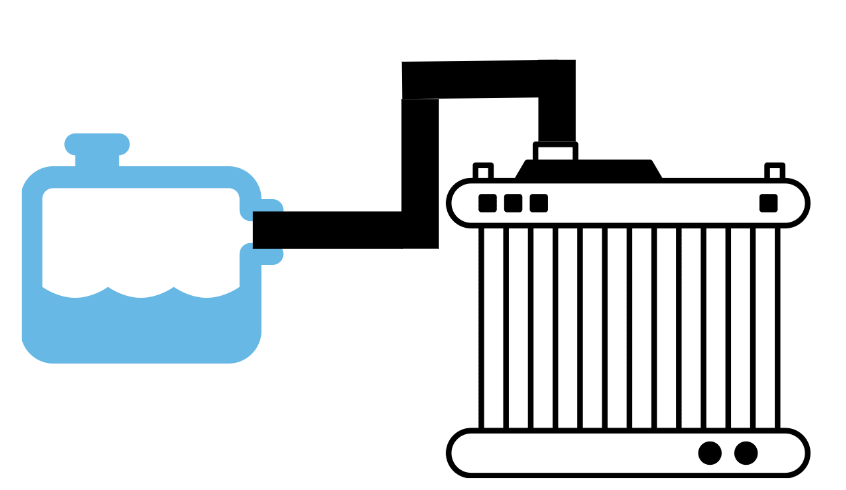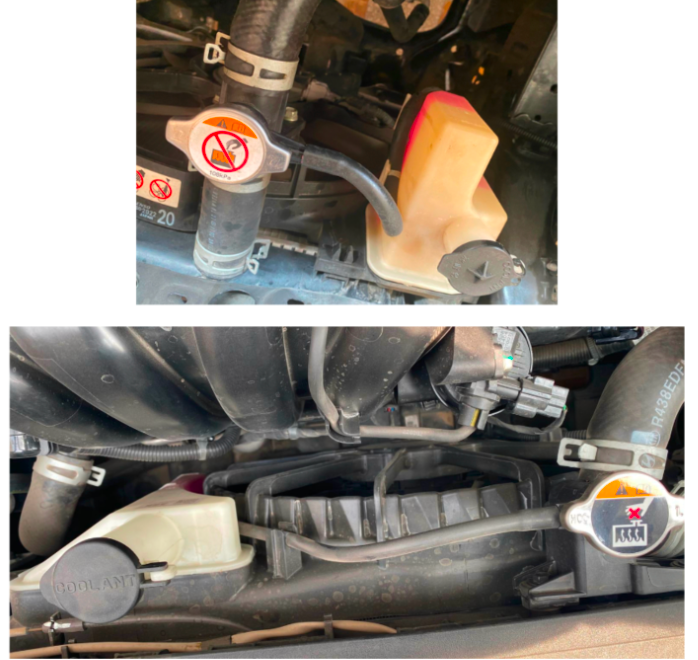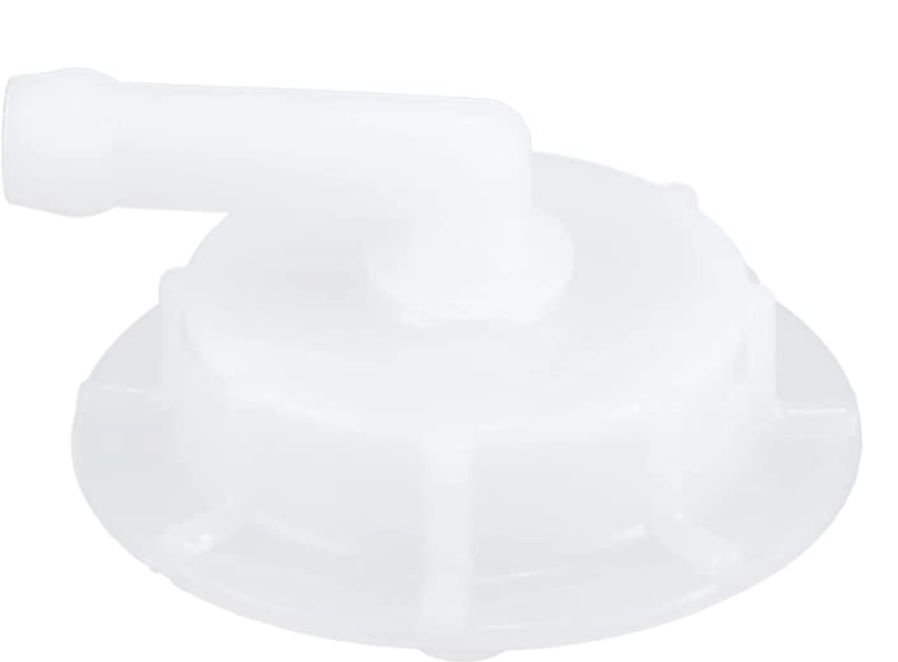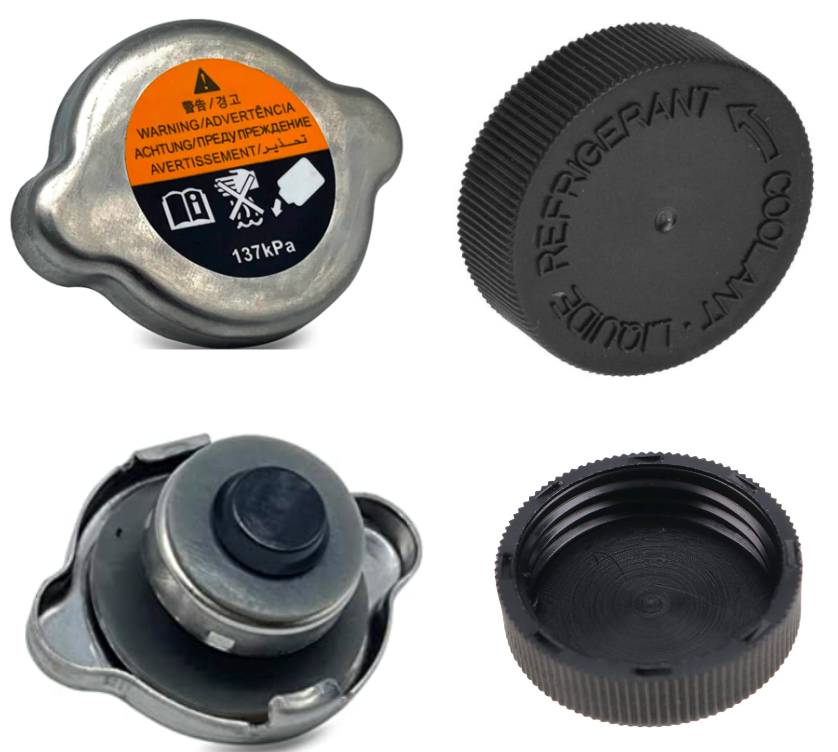Coolant Reservoir Cap Missing: What Will Happen?
The coolant cap on top of the reservoir tank helps keep the coolant inside. If coolant reservoir cap is missing, the coolant can boil and go away as steam faster than normal. This makes the engine get too hot. When the engine overheats, hot coolant spurts out from the overflow tank. Then there is less and less coolant left inside the engine. To stop an overheating engine, tape plastic wrap over the tank opening. Use a rubber band to keep it sealed. Get a replacement cap as soon as possible so the engine stays at the right temperature.
Losing the coolant reservoir cap from the overflow tank is worrying. With no cap to keep closed, the coolant can spill out bit by bit. Before long, far too little is left inside to prevent the engine from overheating.
Quickly replacing the missing radiator cap is important. But that can be hard if the right replacement part is missing.
In this handy guide, we’ll talk about what you should do if the coolant reservoir cap goes missing.
- Coolant reservoir cap seals the overflow tank to contain coolant and maintain pressure. Without it, coolant can leak out causing overheating.
- Driving without the coolant reservoir cap allows coolant to spill and engine to overheat. Monitor the temperature gauge and stop if too hot.
- Temporary fixes like duct tape or plastic wrap can seal the reservoir until getting a replacement cap.
- Must use manufacturer-recommended cap for proper fit and cooling system functionality.
- Missing coolant reservoir cap causes pressure loss and air entry leading to overheating and possible engine damage.
What Is Coolant Reservoir and Why Is It Important?
The coolant reservoir is a plastic container in the engine bay that holds extra coolant fluid. Marked with “minimum” and “maximum” lines, it stores excess coolant the radiator pushes out when reaching high pressure.
The coolant reservoir, also called the overflow tank, connects to the radiator via a hose. It is located near the radiator and radiator cap, which releases pressure at a certain level. If pressure builds too high, coolant gets pushed from the radiator into the reservoir for storage.

In the above picture, I have made a simple illustration of how the radiator cap is connected to the coolant reservoir via a hose. I have two cars i.e. Toyota Vitz and Hyundai Elantra. I have attached pictures of coolant reservoirs in both vehicles:

In both vehicles, you can see that a hose goes from a radiator cap to the bottom of coolant reservoir aka overflow tank. However, you will also find some vehicles in which that hose from radiator is connected to the cap of coolant reservoir.
Such vehicles have coolant reservoir caps like this:

The coolant reservoir is important because it helps regulate system pressure. When the cooling system is pressurized, coolant expands into the reservoir. When pressure drops, coolant flows back into the radiator and engine.
If there is no coolant reservoir and the hose from the radiator cap is just open to the atmosphere, it will suck air back into the system instead of coolant. If air is introduced into the cooling system, it causes overheating and a head gasket.
Additionally, the see-through plastic coolant reservoir lets you safely monitor the coolant level and color.
Without it, you’d have to regularly open the pressurized radiator cap to check coolant, risking coolant splashing out and burns. The reservoir also has an easier to use cap than the radiator cap.
What Is The Role Of A Coolant Reservoir Cap?
The purpose of a coolant reservoir cap is to:
- Keep coolant contained to prevent engine overheating
- Block debris to keep the cooling system clean
- Maintain pressure for efficient cooling
- Prevent air entry so coolant circulates properly
The coolant reservoir cap seals the reservoir to contain expanding coolant as the engine heats up. This stops rapid boiling and evaporation which would drain coolant quickly.
The cap also prevents contaminants from entering and keeps splashing to a minimum for safety. Air entry is blocked so bubbles do not form, ensuring coolant flows through the engine.
Overall, the reservoir cap is vital for optimal cooling system operation, overheating prevention, and safe driving.
This is a basic Physics principle that when the pressure above the liquid surface increases, the boiling point of a liquid also increases. This is the reason that in a pressure cooker, food cooks faster as the water takes time to boil due to an increase in pressure.
Let’s apply this same principle to the coolant reservoir. When the reservoir cap is put on it, it makes a sealed container of coolant in which the coolant will expand but it will not start boiling and evaporating at a faster rate.
If the coolant reservoir cap is missing, the pressure above the surface of the coolant in the reservoir decreases as it is exposed to the pressure of surrounding air. As a result, the coolant will start boiling and evaporating at a faster rate.
Coolant Reservoir Cap vs Radiator Cap

The coolant reservoir cap is a basic plastic lid. It seals up the container holding extra coolant, like a soda bottle cap.
The radiator cap works differently. It is made of steel and controls pressure. Inside is a spring that pushes back. When the pressure gets too high, the spring lets go. This opens a valve that releases extra pressure. Some hot coolant flows to the reservoir then.
The radiator cap has a stamped number on it. This number tells how much pressure it can handle before the valve opens. The coolant reservoir cap does not have a pressure rating. It only seals up the reservoir.
What are the Causes of Missing Cap of Coolant Reservoir?
Here are the causes of the Lost cap of coolant reservoir
1. Poor Installation Of Coolant Reservoir Cap
It’s common for car owners to not put back the coolant reservoir cap after adding coolant. People make mistakes, like not securing the cap tight enough before driving.
2. Wear and Tear
Over time, the coolant reservoir cap gets worn out. This makes it easier to fall off or break. Old coolant reservoir caps lose their ability to seal, causing leaks.
3. Engine Vibrations
Vibrations from the engine can loosen the coolant reservoir cap. Eventually, it may come completely off the tank. This happens more with vehicles used off-road over rough terrain.
4. Heat Damage
Heat expands the plastic cap. This can make it loose and pop off later.
5. Cap Blows Off
Blocked radiators also make the cap fly off. With no flowing coolant, pressure builds up.
Ill-fitting coolant reservoir caps don’t seal right either. Same for damaged or warped caps. Cracked reservoirs mess up the pressure balance – cap goes flying!
What Happens If I Drive Without Coolant Reservoir Cap?
The cap on the coolant overflow tank is important. Without the cap, the engine can get too hot. This is risky.
When the engine gets too hot, parts inside like the cylinders and piston rings can break. An engine that is too hot can also just stop running. This strands drivers.
If driving without the coolant reservoir cap, watch the heat gauge on the dashboard. Stop right away if it shows the engine is hot.
The coolant overflow tank holds extra coolant. The radiator and engine can still have coolant inside. You should check the coolant level.
Also with no coolant reservoir cap, do not use AC or drive fast. Instead, go at an easy pace.
What Can I Use If I Lost My Coolant Reservoir Cap?
If you lost the cap of the coolant overflow tank, you can use other things to seal it off for some time. A piece of tape – duct tape or electric tape – can work. Put the tape over the opening. This will stop the coolant from spilling out until you get a new cap.
Plastic wrap or seran wrap can also work for some time. Cover the opening with the plastic wrap. Use a rubber band or tie to keep it in place. But this is not a permanent fix. It should only be used until you can get the right new coolant reservoir cap.
Can I Use Any Coolant Reservoir Cap For My Car?
No, it’s essential to use the manufacturer’s recommended coolant reservoir cap to ensure that it fits and functions correctly.
Using an incorrect coolant reservoir cap can cause the system to lose pressure, which can lead to overheating and engine damage. It is important to use the correct cap that is designed for your specific make and model of car.
Can A Missing Coolant Reservoir Cap Cause A Check Engine Light?
When the coolant reservoir cap goes missing, it makes the cooling system lose pressure. When this happens, the engine can get too hot. An engine that gets too hot can hurt its inside parts. This could make the check engine light turn on.
With no coolant reservoir cap, air goes into the coolant system. Air makes the coolant not flow as well to cool the engine right. Then again the engine gets too hot. The inside parts could get damaged. So the check engine light comes on.
